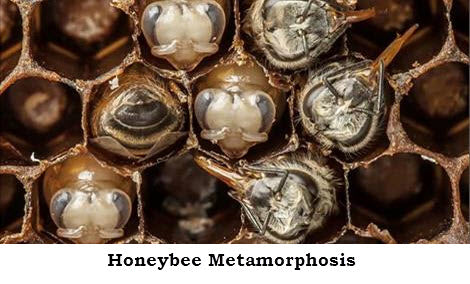Beekeeping Class 101 - Class #4: Hive Management
Posted by Eva Andrews on

Get ready for Class #4! Join us Sunday, May 15th (9am-noon) at Bill's Bees Bee Yard for Class #4 of the 2016 Los Angeles County Beekeepers Association Beekeeping Class 101 series (Bee Suits Required).
In this hand’s on beekeeping class you’re going to learn about hive management and what to look for to see how your bees are doing:
- Is my queen healthy? Or, am I queenless?
- Is there brood? Or, do I need to replace my queen?
- Is there food? Or, do I need to feed my bees? What? When? How?
- Are there Varroa mites? And if so, what do I do?
For those of you who attended Class #3, we took our first peek inside the hive and had a look around:
We learned to approach a bee hive from the side, slowly and with care, and that it’s not a good idea to stand in front of the hive, blocking the entrance. Foragers, packed with nectar and pollen, were anxious to get in.
A few puffs of smoke from the smoker helped calm the bees before we opened the top cover. Once the cover was removed, we began our inspection inside the hive. As we removed the frames we leaned them against the side of the box. We worked from the outside frames first then moved toward the inside. While carefully removing the frames, we looked for the queen. She's larger and moves quicker than the worker bees and is usually going from cell to cell laying eggs. We finally found the queen surrounded by her 'court,' healthy and happy, and busy laying eggs.
We saw where the worker bees had started building wax on new frames and were forming the wax into cells. Honey bee cells are the same size all over the world. Worker bee cells are the smallest cells, flat topped, capped with wax. This is called capped brood. Drone cells are bigger, taller, with a dome top. Queen cells are large, peanut shape and texture.
We learned that a beehive consists of three types of bees: Females: 1 Queen, Thousands of Worker Bees. Males: Drones. These three types of individual bees make up the collective hive which is an organization in itself.
It was an amazing first look inside a bee hive; lot's of oooh's and aaah's, and finger's pointing: What's this? What's that? What are they doing?
Now, in Class #4, we’re going to go more in depth, and learn to recognize the signs of a healthy or troubled hive:
First, we’re going to find the queen and determine if she’s still laying eggs. If she’s not laying, she may be a dud, and we might need to replace her. And, how do we replace a queen?
Then, we’ll look for eggs and see if the larvae have been fed royal jelly. Worker bees feed royal jelly (a milky white substance) to larvae for the first three days. After three days, the worker bees feed the larvae pollen (bee bread). They will continue to feed pollen to the larvae until the larvae is capped off; usually around the 14th or 15th day. Worker bees emerge about 21 days after the egg is laid, drones 24 days, and a queen will emerge about 16 days after the egg is laid. We’re going to learn to identify the differing stages of larvae, locate the capped brood, and learn what the brood pattern reveals to us about the health of the brood and the hive. We'll also learn to tell the difference between capped brood and capped honey.
We'll cover what bees eat:
- Why do bees need pollen: It is their protein. If bees are not bringing in enough pollen, you’ll learn to determine if you need to feed them a pollen substitute.
- Why do bees need nectar: It is their carbohydrates. If the bees are not bringing in enough nectar, you may need to feed them sugar syrup. You'll learn how.
We’ll talk about Varroa mites. They seem to be out way too early this season. We’ll discuss various ways of testing for mites and what to do if your bees are infested.
Now, if you really want to get excited and get a jump on identifying the stages of larvae, check out this amazing time lapse video from National Geographic. Honeybee Metamorphosis: From tiny eggs to quivering pupae to hair-sprouting adults, worker honeybees develop at lightning speed thanks to a time-lapse video of 2,500 images. http://video.nationalgeographic.com/video/magazine/150415-ngm-bees-more.

With good mentoring, monitoring, and continued learning of beekeeping skills, your bees are off to a good start. Enjoy!
Happy Bee-ing!
Bill & Clyde
Bill’s Bees
